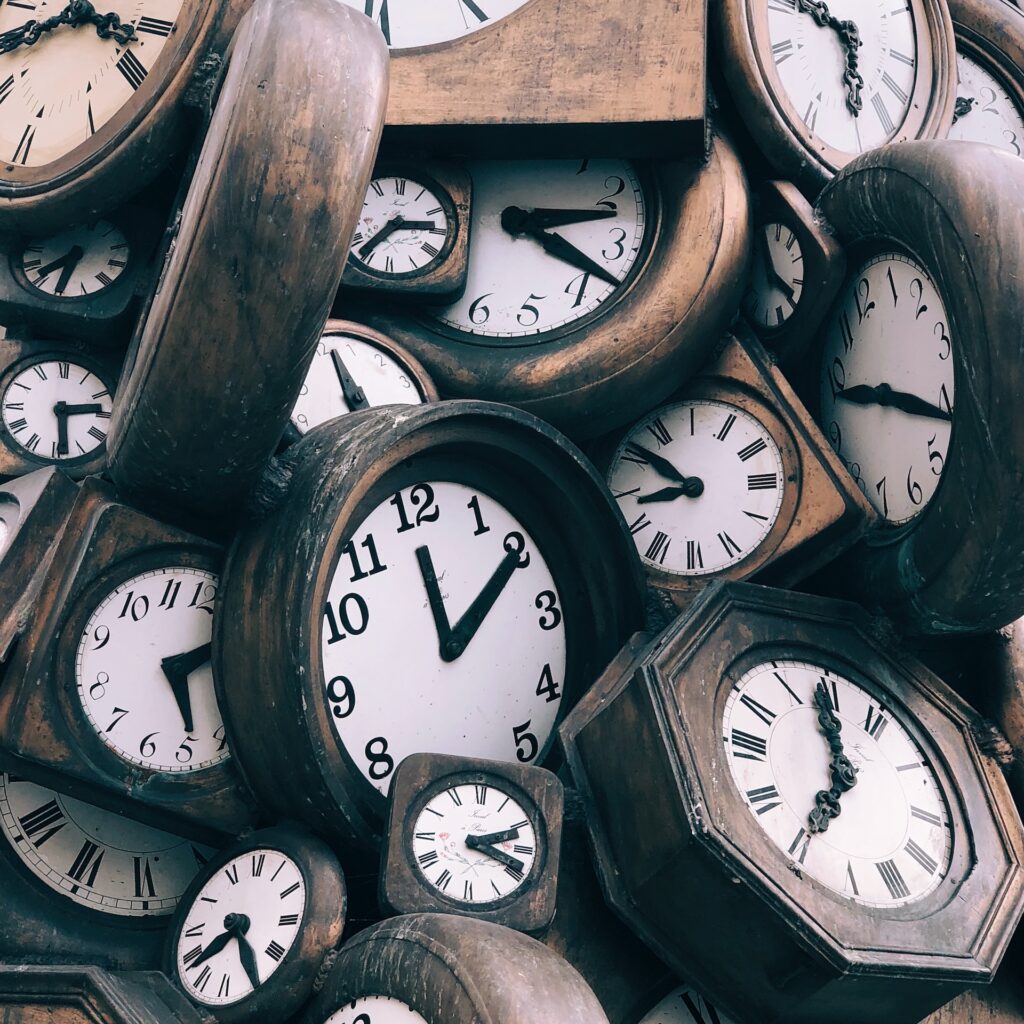Contact Us
We’d love to hear from you

During the pandemic I spent the winter isolated in the woods of Cape Cod. Sometime in early April when the ground was still crunchy with morning frost, both my climbing hydrangea bloomed. I was amazed: How did they know that very same early morning that now was the time? Perhaps time is a spirit that taps the plants on their heads and cries: Wake up, wake up now!
What is time? St. Augustine described it this way:
We don’t know either. It’s not a force we can scientifically establish. We know that the rotations of planets govern our cycles. Day and night, seasons, shortest days and longest nights, longest days and shortest nights – these signal a mystery we have lost touch with. We used to celebrate these changes with feasts of rejoicing, gratitude and awe. Some of us still do.
For most of us, though, our visceral sense of time is attenuated by city lights and more and more by our multiple screens. We light up the night with artificial worlds that will soon take on volume and depth to intensify the illusion. In the near future we will be entering into meta verses commanded uniquely by our need to be entertained or to escape the reality of nature that we so desperately need to reconnect with.
Wasting time in frivolous pursuits that distract without pleasure; abandoning the comforting cycles that take us through time as a lived experience; believing in the notion that our lives follow a straight timeline, from start to end, fixed and limited, are so many ways of killing time.
Time is more than a straight line and time is precious. Time is also lived. Yet we would be hard pressed to see that in most of life today. We no longer go to bed at sunset as our ancestors did and wake up at sunrise. We fill our lives with light from displays but not the Light of Nature. We no longer embody our fundamental truth, that we are part of this vast tapestry of Nature and like the plants and the animals need to return to listening to Nature and to our own deep inner rhythms.
Visiting a health food store recently, bemoaning with the owner the Christmas tree decorations displayed down the street three months before Christmas, I asked why she doesn’t even have Halloween ornaments up, a celebration on October 31 in the US that is pure fun. “It’s not healthy,” she said. She should know, she deals out health in little bottles, one pill a day. Yet like the Mad Hatter sentenced to death for “murdering the time,” we are endlessly having a tea party with our accomplices and the conversation turns always around the same theme: We’re so busy, so busy, so busy!
No matter how busy we seem to be or how we have killed time, we can’t encapsulate time like a pill in a bottle or even an event in our lives: it flows whether we like it or not but we can mark the rhythm and lengthen the time that has seemed to all of us lately to be rapidly contracting.
I experience time as a spiral, an ever moving, non-linear flow. In Kabbalah of Light, I described it this way:
Our lives, our planets, and our galaxies, in fact, describe a spiraling pattern. The spiraling pattern is ensuring that we can never step in the same river twice, nor do two things in exactly identical ways. If it were otherwise, we would be like machines spitting out the exact same copy every time. Free choice wouldn’t exist, and we would never evolve. Our creative purpose, which is the living breath within us, wouldn’t manifest.
Time can be healthy. Einstein quipped that “The only reason for time is so that everything doesn’t happen at once.” Whether he was flip or serious, time gives us what we need to return to inner gazing and inner listening. Without time we can’t repair or restore what is out of synch, we can’t recover the beat. Time is a gift for, without it, we are becoming disembodied and frantic. With time we have the opportunity to repair what was not working and, in the process use our time for growth and transformation.
When we are no longer grounded in time’s healing, consoling and restorative powers, we get anxious and depressed. True, we are born, grow up into the busyness of life, get old and die. This linear projection is one trajectory we can’t escape. But are there other time trajectories that can help slow down this crazy acceleration?
Time, anchored like all great music by highs and lows, is awaiting. The ancient sages called the pause between the highs and the lows “deep time,” suggesting that the plunge into a silent expanded present is the type of healing we now need.
Here an exercise to help us experience deep time.
Close your eyes.
Breathe out slowly three times, counting from 3 to 1. See the one tall, clear and bright.
You are walking in a garden and come upon an ancient sundial that says: “I count only those hours that are serene.” What happens to time? To you?
Breathe out. Open your eyes.
Let the serene hours become your hours.
Catherine Shainberg, Ph.D. | October 2023